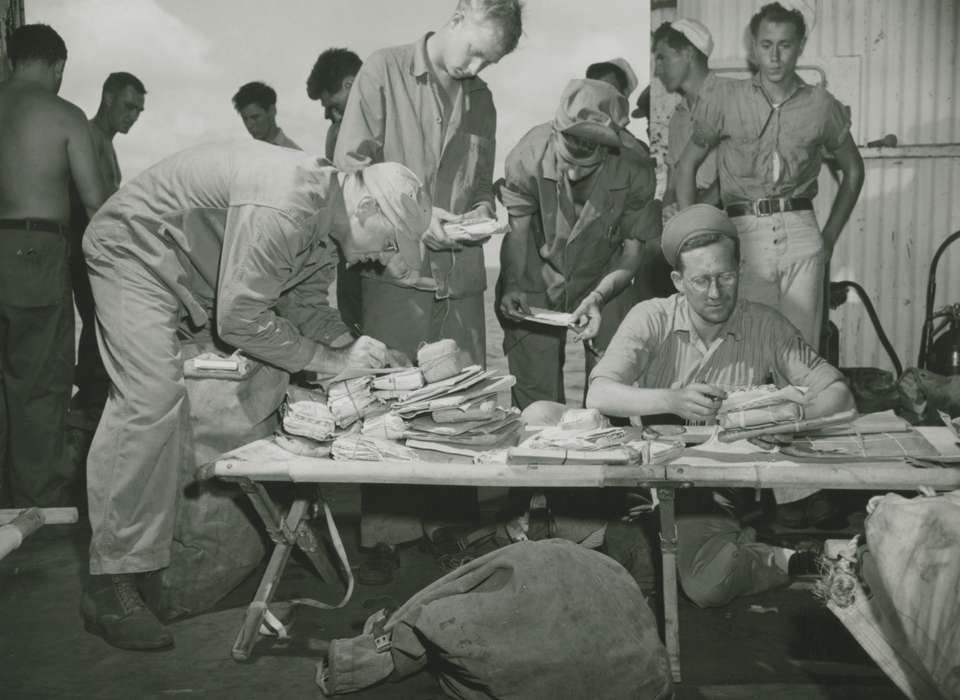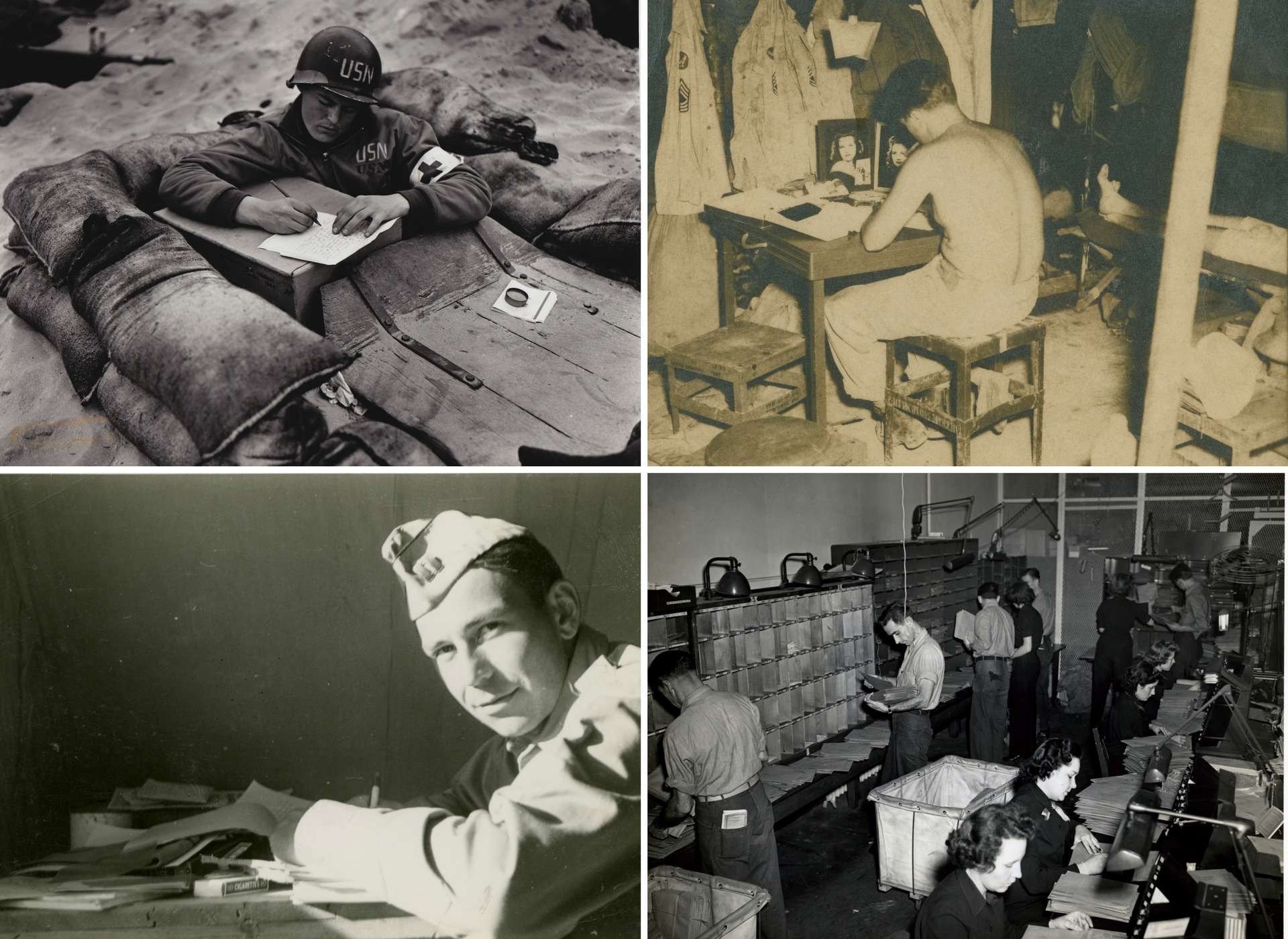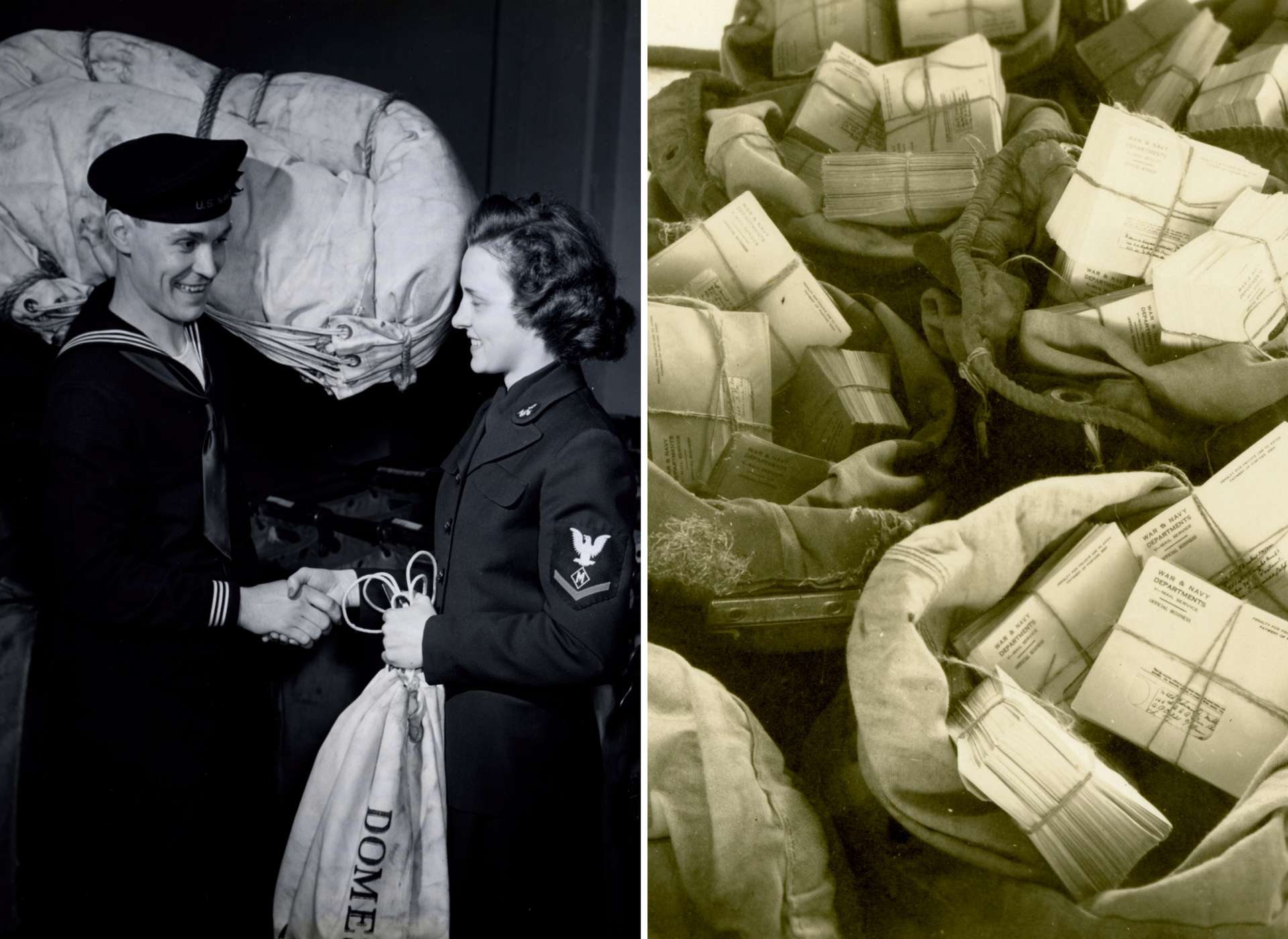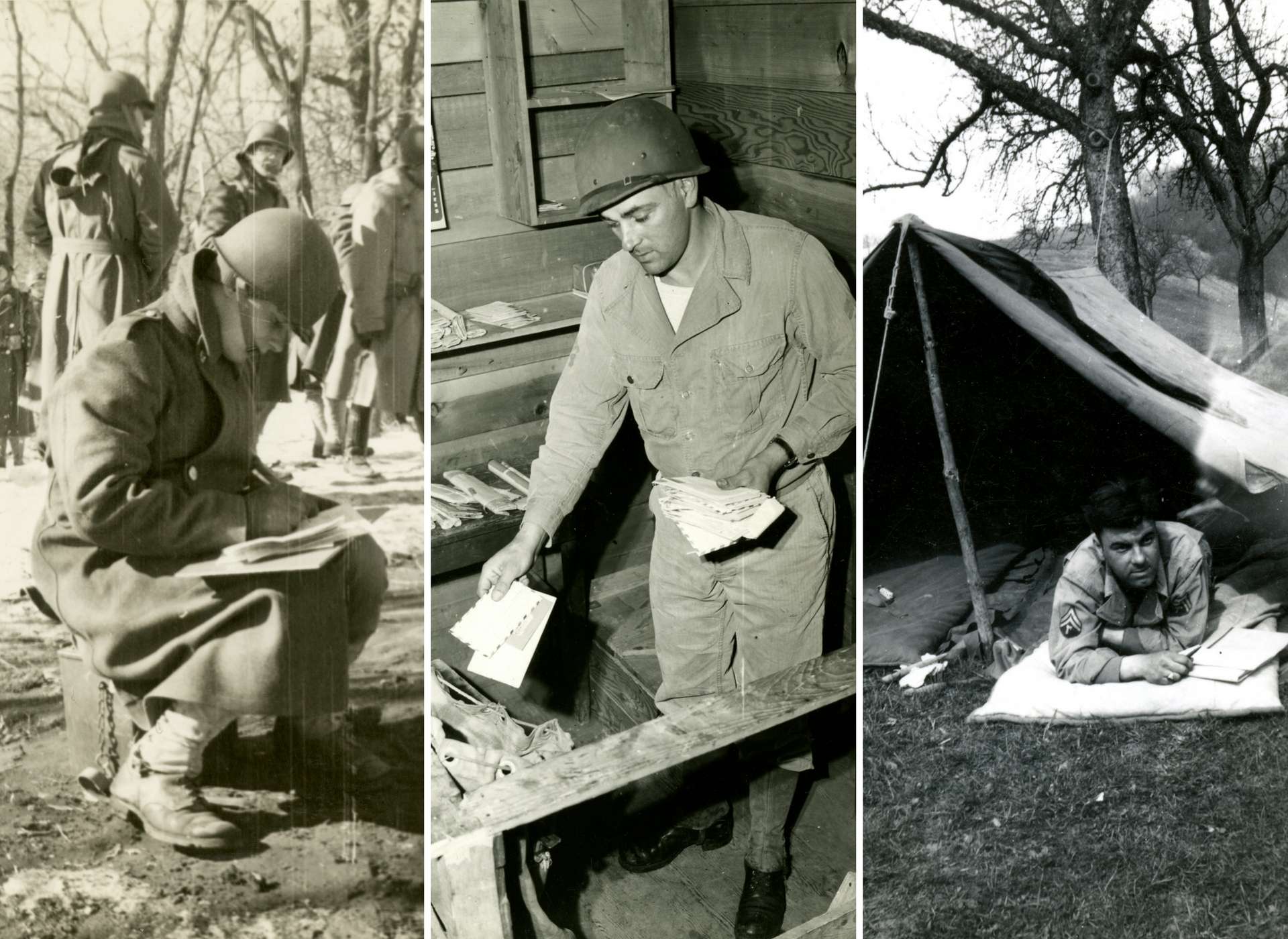As central to its mission, The National WWII Museum places primary focus on the personal experiences during World War II. Oral history accounts and first-person narratives are considered among the most valuable sources of historical importance, providing details not gleaned elsewhere. However, many members of the WWII generation never told their story as such.
Some, those who made the ultimate sacrifice, never had the chance. Others found it too painful to tell or considered their story insignificant when compared with those who lost their lives. For these individuals, with stories untold, personal correspondence may be the only trace left behind, the only way to hear their voice and see the war through their eyes.
These valuable resources tell the story of the American experience in World War II in a deeply personal way. The letters home to mothers, girlfriends, newlywed wives, and children; the diaries of servicemen and servicewomen; and personal photographs from travels around the world are all examples of the way the Museum’s archives directly describe the experiences of each man, woman, or child at that time.
The firsthand accounts within these collections offer a look into everyday lives on the Home Front, in training, life in the field, life aboard ship, in combat, during hospital stays, and in occupation duty. Letter writers instruct wives to buy footballs for sons for Christmas, or talk of wishing they could be at their formerly despised job back home. They want to make sure their daughter had her shots, that the rent was paid, or that the insurance was taken care of should they not make it home. They tell of foreign shores seen, exotic animals, typhoons, and native populations. Those back home tell of school assignments, blackouts, bond drives, rationing, and prayers for the safe return of loved ones.
Correspondence offers the ideal expressions of the moment—the language of the time, jargon and military slang of World War II. They are time capsules in envelopes. The physical pieces themselves offer much in the way of information: the paper they were written on, the handwriting or typeface, the V-mail stationary, the stamps or lack of them, the APO (Army Post Office) addresses, the censors marks. They may say a great deal about the resources available or the time it took to get a simple message like “Mom, I’m OK” across the globe. Some letters were returned marked “Missing in action” or “Whereabouts unknown.” Mail was an invaluable lifeline to those at home. The power that a simple letter had upon the morale of one in service is incomprehensible. In an age when immediate contact was impossible, waiting on the mail was a constant preoccupation. When one did not receive a letter, it was a constant source of worry. The mail itself is a very popular topic of correspondence, nearly every letter either promising to write soon or begging the recipient to write more often.
Letters offer the most intimate glimpses into personal relationships. Sometimes, it is not only what is on the page that is important, it is what the writer could not or did not want to convey that is truly meaningful. Many wartime correspondents did not want to create anxiety for those back home or for those serving. They tell of the everyday, they tell of ordinary meals eaten, letters received, and inquire about the health and safety of faraway loved ones. Rarely will they expose sentiments of fear, despair, or elements of danger. Only by reading between the lines can readers judge the true meaning or historical significance.
Letters express like perhaps no other source hopes and desires for the future. Unlike oral histories, narrated decades after the outcome of the war, personal correspondence was composed at a time when the future of the war, and indeed the future of the composers themselves, was unknown. These primary-source documents—letters home—can often fill in the gaps within traditional historical narratives. Whether the author was writing home prior to embarking on a bombing mission over Europe or after having witnessed a performance at the Stage Door Canteen, these missives contain valuable insights. The historical significance may not always be crystal clear; letters may require study and context before their meaning becomes apparent. The value may only come after comparison with similar tales. The possibilities for cross-referencing and corroboration are endless.
These singular resources will survive far beyond the time when the last WWII veteran has passed. The information they provide is immediate, requiring no instruction about how to interpret them. They speak for themselves. Each piece tells us something new, adding a unique personal vision to the immense story of World War II.
Kim Guise
Kimberly Guise holds a BA in German and Judaic Studies from the University of Massachusetts Amherst. She also studied at the Universität Freiburg in Germany and holds a masters in Library and Information Science (MLIS) from Louisiana State University. Kim is fluent in German, reads Yiddish, and specializes in the American prisoner-of-war experience in World War II.
Cite this article:
MLA Citation:
APA Citation:
Chicago Style Citation:












